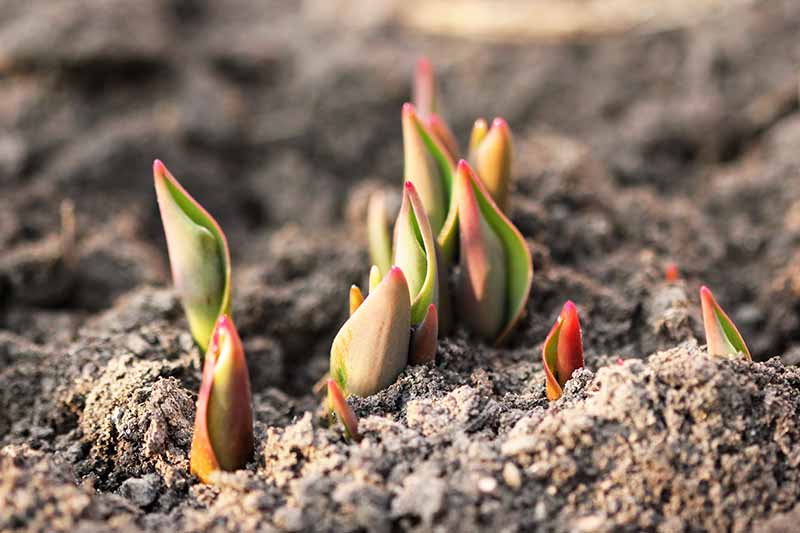Understanding Tulip Sun Requirements: Separating Fact from Fiction
Tulips are one of the most popular and iconic flowers in the world, and their care is often shrouded in mystery. One of the most common misconceptions about tulips is that they require full sun to thrive. However, this is not entirely accurate. While tulips do need sunlight to grow and bloom, the amount of sunlight they require is often exaggerated. In fact, many tulip varieties can tolerate partial shade, and some even prefer it.
So, do tulips need full sun? The answer is no, but they do need some sunlight to photosynthesize and grow. The ideal amount of sunlight for tulips depends on the variety, but most tulips require at least 4-6 hours of direct sunlight per day. However, in warmer climates, it’s best to provide some shade, especially during the hottest part of the day, to prevent scorching of the leaves and flowers.
Understanding the sunlight requirements of tulips is crucial for their growth and blooming. Too little sunlight can result in weak and spindly stems, while too much sunlight can cause the leaves to become scorched and the flowers to fade. By providing the right amount of sunlight, you can encourage healthy growth and vibrant blooming in your tulips.
In addition to sunlight, tulips also require well-draining soil and adequate water to thrive. However, overwatering can be detrimental to tulips, so it’s essential to strike a balance between keeping the soil moist and not waterlogged. By understanding the specific needs of your tulips, you can create a thriving and beautiful garden that will bloom for years to come.
Whether you’re a seasoned gardener or a beginner, understanding the sunlight requirements of tulips is essential for their care. By separating fact from fiction and providing the right amount of sunlight, you can unlock the secrets of tulip care and enjoy a stunning display of color and beauty in your garden.
How to Provide the Perfect Amount of Sunlight for Your Tulips
Providing the right amount of sunlight for tulips is crucial for their growth and blooming. While tulips do need some sunlight to photosynthesize and grow, too much direct sunlight can be detrimental. So, how can you provide the perfect amount of sunlight for your tulips?
The ideal amount of direct sunlight for tulips is between 4-6 hours per day. However, this can vary depending on the variety of tulip and the climate you live in. In warmer climates, it’s best to provide some shade, especially during the hottest part of the day, to prevent scorching of the leaves and flowers.
One way to provide the right amount of sunlight for your tulips is to use shade cloth or other methods to filter the sun’s rays. Shade cloth can be placed over the tulip bed to filter out some of the direct sunlight and prevent overheating. You can also use trees or other plants to provide natural shade for your tulips.
Another way to provide the right amount of sunlight for your tulips is to plant them in a location that receives morning sun and afternoon shade. This will provide the tulips with the sunlight they need to grow and bloom, while also protecting them from the intense heat of the afternoon sun.
It’s also important to consider the time of day and season when providing sunlight for your tulips. In the spring, when tulips are actively growing and blooming, they require more sunlight than in the summer, when they are dormant. By adjusting the amount of sunlight your tulips receive based on the time of day and season, you can provide them with the optimal conditions for growth and blooming.
By following these tips, you can provide the perfect amount of sunlight for your tulips and help them grow and bloom beautifully. Remember, the key is to provide the right amount of sunlight, not too much or too little. With a little practice and patience, you can become a tulip expert and enjoy a stunning display of color and beauty in your garden.
The Role of Sunlight in Tulip Bloom Production: What You Need to Know
Sunlight plays a crucial role in tulip bloom production, and understanding its impact is essential for growing healthy and vibrant tulips. While tulips do need some sunlight to bloom, too little or too much sunlight can significantly impact the quality and quantity of blooms.
During the growth stage, tulips require sunlight to produce the energy they need to develop flower buds. However, too much direct sunlight can cause the buds to become scorched, leading to deformed or discolored blooms. On the other hand, too little sunlight can result in weak and spindly stems, reducing the overall quality of the blooms.
The duration of blooming is also affected by sunlight. Tulips that receive too much direct sunlight may bloom for a shorter period, as the heat can cause the blooms to fade quickly. In contrast, tulips that receive partial shade may bloom for a longer period, as the reduced heat stress allows the blooms to last longer.
It’s also important to note that different tulip varieties have varying sunlight requirements for optimal bloom production. Some varieties, such as the ‘Darwin Hybrids’, require full sun to produce large and vibrant blooms, while others, such as the ‘Fringed’ varieties, prefer partial shade to prevent scorching of the delicate petals.
By understanding the role of sunlight in tulip bloom production, you can take steps to optimize the sunlight your tulips receive. This may involve providing shade cloth or other forms of shade, or selecting tulip varieties that are specifically bred for their sunlight tolerance.
Remember, the key to successful tulip bloom production is finding the right balance between sunlight and shade. By providing your tulips with the optimal amount of sunlight, you can enjoy a stunning display of color and beauty in your garden.
Tulip Varieties and Their Sunlight Requirements: A Guide
When it comes to tulip care, understanding the specific sunlight requirements of different tulip varieties is crucial for optimal growth and blooming. While some tulips thrive in full sun, others prefer partial shade or even full shade. In this section, we’ll explore the different types of tulip varieties and their specific sunlight requirements.
**Full Sun Tulips**
Tulip varieties that thrive in full sun include the ‘Darwin Hybrids’, ‘Fosteriana Tulips’, and ‘Lily-Flowered Tulips’. These tulips require at least 6 hours of direct sunlight per day to produce large and vibrant blooms. Examples of full sun tulips include ‘Ballerina’, ‘Couleur Cardinal’, and ‘Purissima’.
**Partial Shade Tulips**
Tulip varieties that prefer partial shade include the ‘Fringed Tulips’, ‘Viridiflora Tulips’, and ‘Species Tulips’. These tulips require 4-6 hours of direct sunlight per day and can tolerate some shade, especially during the hottest part of the day. Examples of partial shade tulips include ‘Angelique’, ‘Burgundy’, and ‘Spring Green’.
**Full Shade Tulips**
Tulip varieties that thrive in full shade include the ‘Kaufmanniana Tulips’ and ‘Greigii Tulips’. These tulips require less than 4 hours of direct sunlight per day and can tolerate deep shade. Examples of full shade tulips include ‘Showwinner’, ‘Red Emperor’, and ‘Alba’.
By understanding the specific sunlight requirements of different tulip varieties, you can provide the optimal conditions for growth and blooming. Remember to also consider the time of day and season when providing sunlight for your tulips, as this can impact their growth and blooming.
Common Mistakes to Avoid When Providing Sunlight for Tulips
When it comes to providing sunlight for tulips, there are several common mistakes to avoid. These mistakes can impact the growth and blooming of your tulips, and may even lead to their demise. In this section, we’ll highlight the most common mistakes to avoid when providing sunlight for tulips.
**Providing Too Much Direct Sunlight**
One of the most common mistakes is providing too much direct sunlight for tulips. While tulips do need some sunlight to grow and bloom, too much direct sunlight can cause the leaves to become scorched and the flowers to fade. This is especially true for tulips that are planted in warmer climates or in areas with intense sunlight.
**Not Providing Enough Sunlight**
On the other hand, not providing enough sunlight for tulips can also be detrimental. Tulips need at least 4-6 hours of direct sunlight per day to produce healthy growth and blooms. If they don’t receive enough sunlight, they may become weak and spindly, and may not produce any blooms at all.
**Neglecting to Consider the Time of Day and Season**
Another common mistake is neglecting to consider the time of day and season when providing sunlight for tulips. Tulips have different sunlight requirements at different times of the day and season. For example, in the spring, tulips require more sunlight to produce healthy growth and blooms. In the summer, they require less sunlight to prevent scorching of the leaves and flowers.
**Not Using Shade Cloth or Other Forms of Shade**
Finally, not using shade cloth or other forms of shade can also be a mistake. Shade cloth can help to filter the sun’s rays and prevent scorching of the leaves and flowers. Other forms of shade, such as trees or other plants, can also provide protection from the sun.
By avoiding these common mistakes, you can provide the optimal amount of sunlight for your tulips and help them to grow and bloom beautifully.
Creating a Tulip-Friendly Garden: Tips for Optimizing Sunlight and Soil
Creating a tulip-friendly garden requires more than just providing the right amount of sunlight. It also involves optimizing soil conditions to support healthy tulip growth. In this section, we’ll offer tips and advice on how to create a tulip-friendly garden, including how to optimize sunlight and soil conditions.
**Optimizing Sunlight**
As we discussed earlier, tulips require a certain amount of sunlight to grow and bloom. However, the amount of sunlight required can vary depending on the type of tulip and the climate you live in. To optimize sunlight for your tulips, consider the following tips:
Use a south-facing garden bed to provide maximum sunlight for your tulips.
Use shade cloth or other forms of shade to filter the sun’s rays and prevent scorching of the leaves and flowers.
Plant tulips in a location that receives morning sun and afternoon shade to provide the optimal amount of sunlight.
**Optimizing Soil Conditions**
Tulips require well-draining soil that is rich in organic matter to grow and bloom. To optimize soil conditions for your tulips, consider the following tips:
Use a mix of compost and perlite to create a well-draining soil that is rich in organic matter.
Add a layer of mulch to the soil to retain moisture and suppress weeds.
Use a fertilizer that is high in phosphorus to promote healthy root growth and blooming.
**Soil Quality, Drainage, and Fertility**
Soil quality, drainage, and fertility are all important factors to consider when creating a tulip-friendly garden. Tulips require soil that is rich in organic matter and has good drainage to prevent waterlogged soil. They also require soil that is fertile and has a pH between 6.0 and 7.0.
By optimizing sunlight and soil conditions, you can create a tulip-friendly garden that will support healthy tulip growth and blooming. Remember to also provide adequate water, fertilizer, and pest control to ensure the best possible results.
Tulip Care Beyond Sunlight: Watering, Fertilizing, and Pest Control
While sunlight is an essential factor in tulip care, it’s not the only thing to consider. Watering, fertilizing, and pest control are also crucial for promoting healthy growth and blooming. In this section, we’ll discuss the importance of these factors and provide tips and advice on how to provide optimal care for your tulips.
**Watering**
Tulips require consistent moisture, especially during the growing season. However, overwatering can be detrimental to tulips, so it’s essential to find the right balance. Here are some tips for watering your tulips:
Water your tulips deeply once or twice a week, depending on weather conditions.
Avoid getting water on the leaves or flowers to prevent fungal diseases.
Use a drip irrigation system or soaker hose to deliver water directly to the roots.
**Fertilizing**
Fertilizing is essential for promoting healthy growth and blooming in tulips. Here are some tips for fertilizing your tulips:
Use a balanced fertilizer that is high in phosphorus to promote root growth and blooming.
Apply fertilizer in the spring when the tulips are actively growing.
Avoid overfertilizing, as this can damage the tulips and the environment.
**Pest Control**
Pests can be a significant problem for tulips, especially during the growing season. Here are some tips for controlling pests:
Use organic pest control methods whenever possible, such as neem oil or insecticidal soap.
Inspect your tulips regularly for signs of pests, such as aphids, slugs, or snails.
Use physical barriers, such as copper tape or fine mesh, to prevent pests from reaching your tulips.
By providing optimal care for your tulips, including watering, fertilizing, and pest control, you can promote healthy growth and blooming. Remember to also provide the right amount of sunlight and optimize soil conditions for the best possible results.
Conclusion: Unlocking the Secrets of Tulip Care for a Beautiful Bloom
By understanding the unique sunlight requirements of tulips, gardeners can unlock the secrets to a beautiful and thriving bloom. While many believe that tulips need full sun to flourish, the reality is that most varieties require a more nuanced approach to sunlight. By providing the right amount of direct sunlight, filtering the sun’s rays, and considering the specific needs of different tulip varieties, gardeners can create a tulip-friendly garden that optimizes growth and blooming.
Remember, do tulips need full sun? Not always. In fact, many tulip varieties thrive in partial shade or full shade, making them a great option for gardens with limited sunlight. By avoiding common mistakes such as providing too much direct sunlight or neglecting to consider the time of day and season, gardeners can ensure a healthy and vibrant bloom.
In addition to sunlight, providing optimal care for tulips includes adequate watering, fertilizing, and pest control. By following the tips and advice outlined in this article, gardeners can create a comprehensive care plan that supports the unique needs of their tulips. Whether you’re a seasoned gardener or just starting out, with the right knowledge and techniques, you can unlock the secrets of tulip care and enjoy a stunning bloom for years to come.





/tulip-types-for-spring-garden-1315804-hero-5c10c927e00c459eb24c702be447e50d.jpg)



